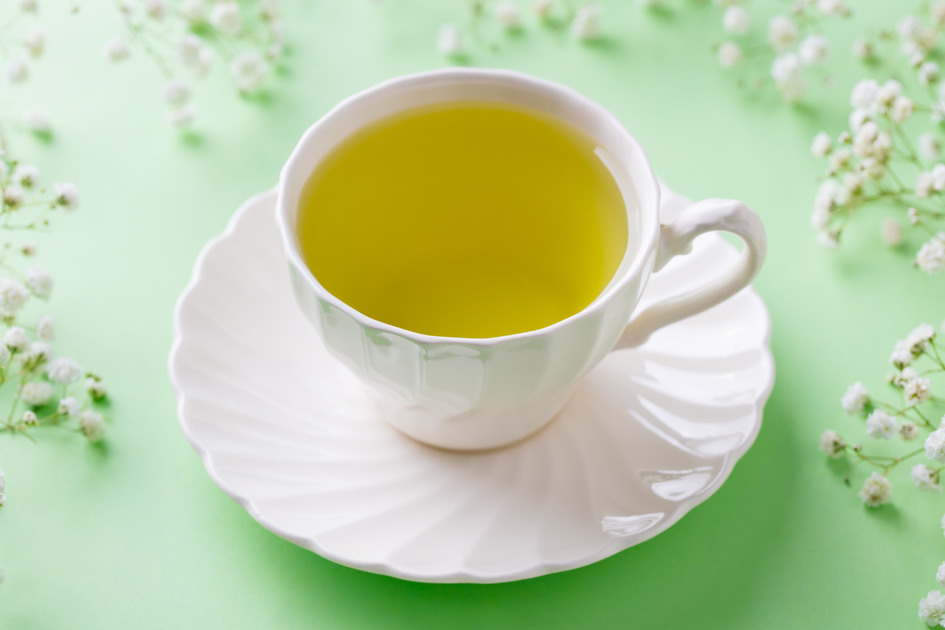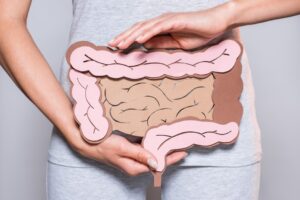Tiny Green Tea Beads Trap Fat and Melt Away Pounds (Without Side Effects)
Imagine if losing weight were as simple as drinking your favorite tea with a special ingredient. It sounds far-fetched, but scientists have developed edible microbeads made from green tea that might do exactly that, acs.org. These tiny green tea microbeads bind to fat in your digestive tract, preventing it from being absorbed. In early tests on animals, the beads helped overweight rats lose about 17% of their body weight with no obvious side effects, newatlas.com. Human trials are now underway to see if this fat-trapping strategy could become a safe, effective obesity treatment in the future.
Why a New Weight-Loss Approach?
Traditional weight-loss methods have serious drawbacks. Diet pills and drugs like orlistat can block fat absorption, but they often cause unpleasant or even dangerous side effects (from oily digestive issues to liver and kidney damage). Bariatric surgeries can be effective, yet they are invasive, expensive, and not without risks. Clearly, there’s a need for a gentler solution that helps people shed pounds without harming their health. This is where the new green tea polyphenol microbeads come in. Developed by a team of researchers at Sichuan University in China, these plant-based beads offer a drug-free, non-surgical approach to weight loss. The goal is to trap fats before your body can absorb them, mimicking a calorie-cutting effect while avoiding the side effects of current weight-loss medications, newatlas.com.
“Our microbeads work directly in the gut to block fat absorption in a non-invasive and gentle way,” explains Yue Wu, the study’s lead researcher. By targeting fat in the intestines rather than altering your whole metabolism, this method aims to help with weight management without making you feel jittery, sick, or nutritionally deprived. It’s a natural strategy leveraging known benefits of green tea, which is rich in antioxidant compounds called polyphenols, in a new, highly targeted form.
The Science Behind Green Tea Microbeads
Researchers crafted the microbeads from three edible ingredients: green tea polyphenols (antioxidant molecules from tea), vitamin E, and alginate (a fiber from seaweed). These components are all food-grade and FDA-approved, meaning they’re already used safely in foods or supplements. When mixed together in the lab, the green tea compounds and vitamin E naturally self-assemble into tiny nanostructures – essentially forming a fat-binding core acs.org. The team then coats each bead with alginate, a gel-like plant fiber, to protect it through the stomach’s acidic environment.
Once you swallow the microbeads, here’s what happens next:
- Surviving the Stomach: The alginate coating shields the bead as it passes through your stomach acid (much like an enteric coating on some pills). This means the bead stays intact until it reaches the intestines.
- Expanding in the Gut: Upon entering the higher-pH (less acidic) environment of the small intestine, the protective coating swells and exposes the bead’s core. Now the green tea polyphenols and vitamin E structures are in position to work.
- Trapping Dietary Fat: The exposed microbead core acts like a magnet for fat molecules. Green tea polyphenols are known for forming multiple bonds with fats, newatlas.com. In essence, the bead tethers to fat droplets from the food you ate, locking them onto its surface. Those fat calories are now captured and can’t pass through your intestinal wall into your bloodstream.
- Natural Exit: The fat-bound beads continue through the digestive tract and eventually get excreted in your stool, taking the attached fats with them. Essentially, some of the fat you eat never truly enters your body – it’s whisked out as waste.
Actual lab-created green tea polyphenol microbeads (white beads shown in a petri dish). These tiny plant-based beads are designed to bind fat molecules in the digestive tract. Coated with a seaweed polymer, they survive stomach acid and then expand in the intestines, where their green tea compounds latch onto fat droplets. The captured fat is later carried out of the body instead of contributing to weight gain.
One of the elegant features of this approach is that it works within your gut without entering your bloodstream or altering your hormones. It’s a bit like having a passive fat filter in your intestines. Because of this localized action, the beads are unlikely to cause systemic side effects. In rat studies, for example, the animals given green tea microbeads did not show the gastrointestinal distress that is common with orlistat (a fat-blocking drug). And since the ingredients are basically extracts from food (tea, vitamin E, seaweed), the intervention is about as “natural” as it gets – it’s leveraging food chemistry rather than synthetic drugs.
Another advantage: the microbeads are reported to be nearly flavorless and have a soft, palatable texture. This means they could be easily incorporated into everyday foods or drinks. The researchers suggest that the beads could be made into small, chewable balls – think bubble tea (boba) pearls – and added to beverages or desserts without affecting taste. You could potentially sip a bubble tea loaded with green tea microbeads, enjoying your treat while the beads quietly intercept some of the fat from your meal.
Promising Results in Animal Trials
Laboratory tests of these polyphenol microbeads in animals have yielded exciting results. In a 30-day trial on rodents, scientists fed groups of obese rats a high-fat diet, with one group also receiving daily microbeads and comparison groups without the beads. The outcomes were striking:
- Significant Weight Loss: The rats on the high-fat diet lost 17% of their total body weight when they were also given the green tea microbeads. In contrast, rats eating the same high-fat diet without the beads did not lose weight. This magnitude of weight loss (~17%) is quite substantial – for context, many popular weight-loss drugs in humans often result in around 5-10% weight reduction.
- Reduced Body Fat and Liver Fat: The microbead-fed rats had less adipose (fat) tissue in their bodies and showed reduced liver damage compared to rats on the high-fat diet alone, newatlas.com. High-fat diets often cause fatty liver and other signs of metabolic stress in animals, so seeing less liver damage suggests the beads were protective. Essentially, by expelling more fat, the rats’ organs didn’t accumulate as much of it.
- “Fat Magnet” Effect: Fecal analysis confirmed that the rats given microbeads were excreting a lot more fat in their waste than the other groups. The beads successfully trapped a portion of the dietary fat and carried it out. Importantly, this extra fat in the stool didn’t cause any apparent gastrointestinal problems – no diarrhea, no intestinal inflammation or discomfort was observed. The process seemed to work quietly, without making the rats sick.
- No Notable Side Effects: Throughout the study, the rats eating the microbeads appeared healthy and behaved normally. Researchers reported no adverse side effects from the beads muscleandfitness.com. In particular, they did not see the typical oily stools or cramping that rats treated with orlistat (the fat-blocking drug) experienced. This is a critical point – it suggests the microbeads might offer a friendlier alternative to current fat-blocking therapies.
These findings, presented at the American Chemical Society conference in August 2025 and published in the journal Cell Biomaterials, highlight a potential “drug-free” obesity treatment that works by physical fat absorption rather than a pharmaceutical mechanism. Seeing obese animals lose weight without any obvious harm was strong proof of concept. “Seeing rats on high-fat diets lose significant weight without any signs of discomfort was a huge moment of validation for us,” said Wu, reflecting on the successful trial at newatlas.com. Of course, as encouraging as these results are, rats are not humans – which is why the research is now moving to the next phase.
From Lab to Everyday Life: What’s Next?
With animal tests looking promising, the scientists are cautiously optimistic but recognize that human studies are essential. The team has already partnered with a biotechnology company to scale up production of the plant-based microbeads. All the ingredients and materials have a long history of safe use, which should help in getting regulatory approval if the beads prove effective. In fact, a clinical trial in humans has begun: 26 volunteers have been enrolled in an initial trial at West China Hospital (Sichuan University) to test the beads’ weight-loss effects in people. The researchers anticipate preliminary results from this human study within a year or so ascs.org.
That said, it’s important to keep in mind the gaps and unknowns at this stage. So far, this approach has only been tested in rodents, not humans. Bodies are complex, and what works in a rat’s digestive system may not translate exactly to people. The human trial will reveal whether green tea microbeads can help people lose weight safely, and whether there are any subtle side effects or challenges that didn’t show up in animals. For example, will long-term use of fat-trapping beads affect the absorption of fat-soluble vitamins or other nutrients? The rat experiment lasted 30 days, but longer-term effects remain unknown. If someone were to use these beads for months on end, doctors would need to monitor nutritional status to ensure there are no deficiencies or other issues. The good news is that in the short term, the animal data showed no signs of inflammation or organ damage, but thorough human data will be required to declare the method truly side-effect-free.
Another open question is how exactly these microbeads would be incorporated into daily life if they do get approved. The concept is highly flexible – because the beads are tasteless and look like tiny gel pearls, they could be delivered in many forms. The researchers envision integrating them into foods or drinks that people already consume. Imagine a yogurt, smoothie, or bubble tea fortified with fat-trapping beads – you might not even notice them, but they’d be working behind the scenes to block some of the fat from a meal. For general consumers looking to maintain a healthy weight, the beads might be used as a dietary supplement taken with high-fat meals, essentially acting as a “fat shield” to reduce calorie absorption. For patients with obesity or conditions like fatty liver disease, a doctor could potentially prescribe a higher-dose regimen of the beads as a structured therapy, alongside diet and exercise – offering a treatment that doesn’t involve harsh drugs or surgeries, newatlas.com.
Concept illustration: Bubble tea pearls similar to tapioca boba could serve as a model for the green tea microbeads. The real microbeads are designed to be flavorless and easily added to foods or drinks ascs.org. Researchers suggest that one day you might order a flavored drink or dessert containing these fat-trapping “boba” beads, turning a tasty treat into a functional weight-loss aid.
Of course, a lot needs to happen before we see green tea microbead products on store shelves or in smoothie bars. The ongoing human trials need to demonstrate safety and effectiveness. If they are successful, further larger trials will likely follow to confirm results and get regulatory approvals. Optimistically, if all goes well, a consumer-friendly version of this technology could be a few years away. But it’s worth noting that all components are common food additives or supplements already, which might streamline the path to public use if proven effective. The prospect of a natural, side-effect-free weight loss aid is exciting: a future where losing weight could be as simple as adding a teaspoon of green tea microbeads to your morning coffee or juice. It’s a concept that aligns with the idea of “functional foods” – turning everyday consumables into opportunities for better health.
The Bottom Line
Research into green tea polyphenol microbeads offers a hopeful glimpse of a new weight-loss tool that is grounded in science. By leveraging the fat-binding power of natural compounds, this approach could help people shed excess fat in a safe, noninvasive way. The early data in animal models are impressive – significant weight loss and metabolic benefits without the side effects seen in current treatments. However, it’s still early days. Human efficacy and safety remain to be proven, and scientists will be closely watching for any long-term issues that need addressing. If the trials pan out, we might soon have an innovative option in our arsenal against obesity: essentially, trapping fat at the source in our gut and flushing it away, all thanks to a tiny green tea-infused bead.
Staying informed about the science of weight loss and healthy aging is just as important as exercise and diet. If you found this development intriguing, be sure to check out our recent article, “Can Exercise Reverse Your Body’s Aging Clock?” – an eye-opening look at how fitness might actually turn back the clock on a cellular level. Learn how regular exercise could make your body biologically younger, and what that means for your long-term health. Don’t miss it! Read the article.





